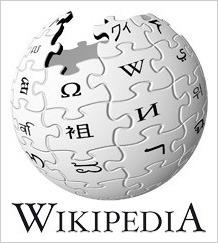 Creativity is the introduction of a novel and appropriate idea or product into a community that transforms the community in some way. Corruption is the decay or redirection of community resources away from a community's purpose toward a self-interested end. Both creativity and corruption alter the possibilities available to later community contributors. In an empirical study of seven contentious Wikipedia pages, Fellow Seana Moran explores: How does the editing community decide, at the time a novel contribution is made, whether it is creative and should be kept, or corrupt and should be removed or blocked? How long does this evaluation take? What evaluative criteria are used? Wikipedia is a conservative environment; the community is concerned about a "wrong" edit staying in the encyclopedia. As a result, it is unwilling to risk inclusion of potentially creative edits for which, at the point the ideas are contributed, it is unsure whether they are "right" or "wrong." Given this policy stance, determining whether a contribution is bad takes a very short time, whereas deciding if a contribution is good can take a long time. Most corrupting vandalism is removed within one day on these pages. Evaluations, on the other hand, may go on for months or years as "edit wars," while contributors argue about the framing and sequencing of information on the page. Evaluations are justified by policy rules, consensus building among the community, and quality judgments of the content itself.
Creativity is the introduction of a novel and appropriate idea or product into a community that transforms the community in some way. Corruption is the decay or redirection of community resources away from a community's purpose toward a self-interested end. Both creativity and corruption alter the possibilities available to later community contributors. In an empirical study of seven contentious Wikipedia pages, Fellow Seana Moran explores: How does the editing community decide, at the time a novel contribution is made, whether it is creative and should be kept, or corrupt and should be removed or blocked? How long does this evaluation take? What evaluative criteria are used? Wikipedia is a conservative environment; the community is concerned about a "wrong" edit staying in the encyclopedia. As a result, it is unwilling to risk inclusion of potentially creative edits for which, at the point the ideas are contributed, it is unsure whether they are "right" or "wrong." Given this policy stance, determining whether a contribution is bad takes a very short time, whereas deciding if a contribution is good can take a long time. Most corrupting vandalism is removed within one day on these pages. Evaluations, on the other hand, may go on for months or years as "edit wars," while contributors argue about the framing and sequencing of information on the page. Evaluations are justified by policy rules, consensus building among the community, and quality judgments of the content itself.
Publications:
- Moran, S. (forthcoming). How does a group decide which novel contributions to accept as creative or reject as corrupting? The case of Wikipedia.
- Moran, S. (2010). Returning to the Good Work Project's roots: Can creative work be humane?
In H. Gardner (Ed.), Good Work: Theory and practice (pp. 127-145). Cambridge, MA: Good Work Project. - Moran, S. (2010). The roles of creativity in society. In J.C. Kaufman & R.J. Sternberg (Eds.), The Cambridge handbook of creativity (pp. 74-90). New York: Cambridge University Press.
Attribution: wikipedia.org
